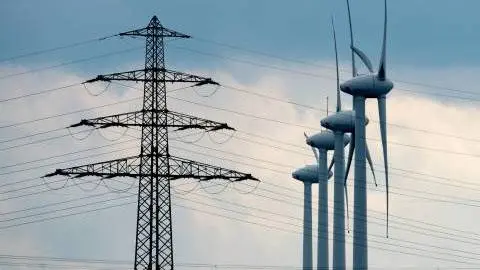Carbon Capture and Storage: Gaining ground, despite challenges
Our top three predictions for carbon capture and storage in 2025 (CCS and CCUS): expect solid infrastructure progress and growing demand, but policy support needs clearer guidance from the US and a firm commitment from Europe
In 2024, carbon capture and storage (CCS) saw significant progress with increased policy support, streamlined permitting, and greater industry interest. Recognised for its role in achieving a net-zero economy, CCS conferences also attracted record attendance levels.
However, fewer projects reached final investment decisions (FID) than expected. Many early-stage projects lacked viable business cases and funding, while even advanced projects faced delays due to complex permitting and project-on-project risks (misalignment of different projects in the CCS supply chain where projects for capturing, transporting and storing CO2 often involve different parties).
Looking ahead to 2025, we anticipate continued progress in CCS, despite policy uncertainty from Trump’s second term, German elections, and the upcoming Clean Industrial Deal in Europe.
Call 1: Solid progress on infrastructure, but CCS development is a long road
There is a growing consensus that Carbon Capture and Storage is essential for achieving a net-zero economy. According to the International Energy Agency, approximately 6,000 megatons of CO2 need to be captured and stored annually by 2050 to meet the goals of the Paris Agreement. This target represents 16% of current global emissions, a stark contrast to the mere 25 megatons currently captured in the US and Europe.
Significant growth expected for CCS in the US and Europe, although it starts from a low base, with most expansion occurring after 2025
CCS capacity in million metric tons per year (megatons)
US: the largest market
The US is expected to maintain its lead, with CCS potentially increasing fourfold by 2030. While many projects were announced following the Inflation Reduction Act, some developers adopted a wait-and-see approach before the elections, as CCS-support scheme details remained unsettled. Post-election uncertainty persists, with the Trump Administration likely to lower climate targets and environmental regulations, potentially deterring medium to smaller emitters from investing in CCS. However, larger emitters remain committed to sustainability, and the Trump Administration’s pro-CCS stance, influenced by the oil and gas industry, supports the multi-billion-dollar CCS market. There is strong momentum for ethanol projects, with developers funding capital expenditures to capture CO2 at $25-$30 per ton, and for transportation and storage at $25-$35 per ton, incentivised by an IRA tax credit of $85 per ton. However, permitting delays and local opposition (NIMBYism) continue to challenge these projects, with most growth expected after 2025.
Europe: catching up with CCS hubs along the North Sea
In Europe, including the UK, policy momentum for CCS is rising, with progress in creating carbon capture hubs in industrial clusters near the North Sea. Significant projects include Northern Lights (storing CO2 from Norway, Denmark, Belgium, and the Netherlands in Norway), Porthos and Aramis in the Netherlands, the Northern Endurance Partnership (NEP in East Coast Cluster) and Hynet (Liverpool Bay) in the UK, and the pilot projects Greensand in Denmark and Ravenna in Italy. European capacity is projected to grow 23-fold by 2030, though from a much lower base compared to the US.
The long road to CCS development
The challenges of making CCS work encompass the entire supply chain.
First, CO2 needs to be captured. Large emitters are hesitant to make final investment decisions for capture installations due to uncertainty and delays in CO2 infrastructure (the chicken and egg debate). This is true even for emitters near planned CO2 infrastructure in the Benelux, UK, and Norway. For many emitters in Eastern or Southern Europe, CO2 transport and storage infrastructure won’t be ready until at least 2035, excluding CCS options as a near-term solution altogether.
Second, CO2 needs to be transported, preferably by pipelines for cost efficiency. The European Commission recently noted that Europe might need 19,000 km of CO2 pipelines by 2050 to meet its net-zero ambition.
Countries take different approaches to regulating the CCS business. The UK tightly regulates this sector to prevent excessive profits from natural monopolies, similar to its regulation of power and gas grids. This results in low and regulated returns, which are unattractive to commercial market players like oil and gas majors who dominate the capture and storage part of the supply chain. Consequently, the development of CO2 infrastructure is primarily left to grid operators.
In contrast, countries like Denmark, the Netherlands, and Belgium aim to involve more commercial parties, such as oil majors and institutional investors. As a result, the business is less regulated compared to the UK. These commercial parties typically prefer to oversize initial pipelines to allow for future scaling. However, the initial financial risk is high due to limited committed volumes of CO2, making it challenging to reach final investment decisions (FID).
The Netherlands exemplifies this issue, as the Dutch government faces little interest from commercial investors to build CO2 infrastructure, leaving the burden on state-owned grid operators like Gasunie and EBN, which require additional funding that the government is reluctant to provide. Yet the government heavily depends on a successful CCS rollout to meet its climate targets. The challenge is to turn this vicious circle into a virtuous one.
Finally, CO2 needs to be stored but there’s no uniform approach to doing this. Different countries and states have varying preferences for offshore and onshore storage, differing permitting procedures, and distinct liability frameworks in case of issues. These variations complicate the development of a global CO2 market.
Addressing project-on-project risk through the alignment of projects across the entire CCS supply chain is crucial for robust CCS growth.
Overall, the long-term CCS outlook is very positive but will take years to materialise. In 2025, progress should be measured by advancements in developing the full CCS supply chain and addressing its challenges with targeted policies, rather than by a strong increase in capacity number (the actual megatons captured and stored).
Call 2: Oil and gas industry dominates CCS demand
Most CCS projects globally are currently focused on enhanced oil and gas recovery, driven by favourable economics in the US and the existing expertise of oil and gas majors in deploying CO2 capture technology. However, by 2030, CCS is expected to be increasingly utilised in (blue) hydrogen production and abated power generation. This includes installing capture systems, steam methane reformers on gas or coal-fired power plants, waste-to-energy plants, and biomass plants.
CCS is also being progressively applied in hard-to-abate sectors, particularly the cement industry, which faces significant challenges in reducing emissions without CCS. While various technologies can help the petrochemical industry and refineries to become greener, CCS remains the most cost-competitive option, further driving its adoption. In the steel industry, emissions can be significantly reduced with CCS, although the sector is increasingly focusing on electrification and hydrogen solutions, limiting the sector’s contribution to CCS.
CCS finds its way among a wide range of users
Anticipated share of CCS users globally by 2030
Storing CO2 is the norm, utilising CO2 the exception
The vast majority of captured CO2 is permanently stored underground (CCS), with only 2% destined for utilisation (CCUS), such as in greenhouses to efficiently grow plants.
In the future, captured CO2 can also be used to produce plastics or synthetic fuels for aeroplanes, ships, or trucks. While this won’t become substantial before 2030, it has vast potential in a net-zero economy where carbon currently sourced from fossil fuels must be replaced by a combination of captured carbon, biogenic carbon, and recycled carbon. Although the CCS industry is often criticised for not providing a ‘truly sustainable solution,’ it holds the potential to become an important carbon source in a net-zero economy.
The future promises the utilisation of CO2 rather than its permanent storage underground.
And so is direct air capture
Almost all CO2 is captured from chimneys on industrial sites (post-combustion or end-of-pipe CCS) or by separating CO2 streams in chemical processes (pre-combustion CCS). Only a tiny fraction, less than 1%, is captured directly from the air using a technology called Direct Air Capture. Demand for this technology comes from major companies like Microsoft, Airbus, Amazon, and Google who are eagerly offsetting their carbon impact not just by planting trees, but by actively removing CO2 from the atmosphere. However, the technology still has a long way to go before it is fully developed and economically scalable. Direct Air Capture is also very energy-intensive and must be fully powered by renewable energy. Otherwise, it risks adding more CO2 to the atmosphere than it removes.
Call 3: Continued policy support, but room for improvement
Policy support for CCS is expected to remain strong on both sides of the Atlantic. In the US, the CCS market could benefit this year from clearer details and guidelines while Europe could benefit from a simpler commitment to CCS. However specific policy details need to be clarified for major players to make final investment decisions.
US: will Trump address the finer details?
The Internal Revenue Service (IRS) in the US has yet to release classifications and guidelines for 45Q, the relevant tax credit for CCS in the Inflation Reduction Act. Initially seen as a minor issue due to the strong support for CCS, it is now considered a critical detail.
Effective policy measures require addressing the finer points, a quality the Trump Administration will have to master. Crucial questions remain, such as the quality of Life Cycle Analyses required for CCS to qualify for 45Q credits, the types of storage sites that can be used, and what applications will count as CO2 utilisation. A lack of action from the Trump administration could suppress the market, but a solution is expected given Trump’s support for the oil and gas industry, which is committed to CCS and likely to lobby for clarity.
Similarly, support from the Department of Energy and the Office of Clean Energy Demonstrations is crucial for building regional Direct Air Capture Hubs, which major tech companies aim to use and advocate for to offset emissions.
Europe’s CCS commitment could benefit from a clear message
Europe’s commitment to CCS shows up in several directives.
In its Industrial Carbon Management Strategy, the European Commission laid out technology pathways for high-emitting sectors in which CCS plays a major role. This was followed in 2024 by the Net Zero Industry Act, which defined clear CCS goals for the European Union, including capturing and storing 50 million tons of CO2 annually by 2030 and utilising an additional 10 million tons of CO2.
In February, the European Commission will present a Clean Industrial Deal as Europe’s answer to the IRA in the US, aiming to simultaneously lower emissions while remaining competitive in global markets. It is expected that CCS will feature prominently as it allows emitters to reduce emissions cost-effectively (CCS is relatively cheap compared to other carbon reduction strategies). It is also anticipated that the deal will stimulate member states to implement Carbon Contracts for Differences (CCfDs) that compensate emitters for the cost difference between the benefits of CCS (the EU carbon price) and the cost of applying CCS. Finally, the Clean Industrial Deal is expected to support cross-border carbon markets by alleviating trade restrictions on CO2 and streamlining permitting processes.
While these initiatives are promising, Europe’s commitment is somewhat obscured within these technical policy documents, which are not well-known by the general public. CCS could greatly benefit from a clear and straightforward policy commitment from the European Commission, and its major member states, as well as the UK and Norway, which are leading the CCS market.
Advances in policy support will be critical for CCS growth in this early market stage, and companies could lobby for it.
More progress expected
Overall, more progress on CCS policies is expected in 2025 on both sides of the Atlantic. The key challenge for companies is to mitigate risks within the CCS value chain. Large emitters face the risk of limited transport capacity, while transportation and storage providers risk having insufficient CO2 captured. Stronger government involvement and coordination of final investment decisions among companies at the level of industrial clusters could help overcome these “chicken and egg” problems, boosting the CCS industry.
This publication has been prepared by ING solely for information purposes irrespective of a particular user's means, financial situation or investment objectives. The information does not constitute investment recommendation, and nor is it investment, legal or tax advice or an offer or solicitation to purchase or sell any financial instrument. Read more
Download
Download article
22 January 2025
Energy Outlook 2025: Growth amid challenges This bundle contains 7 Articles
